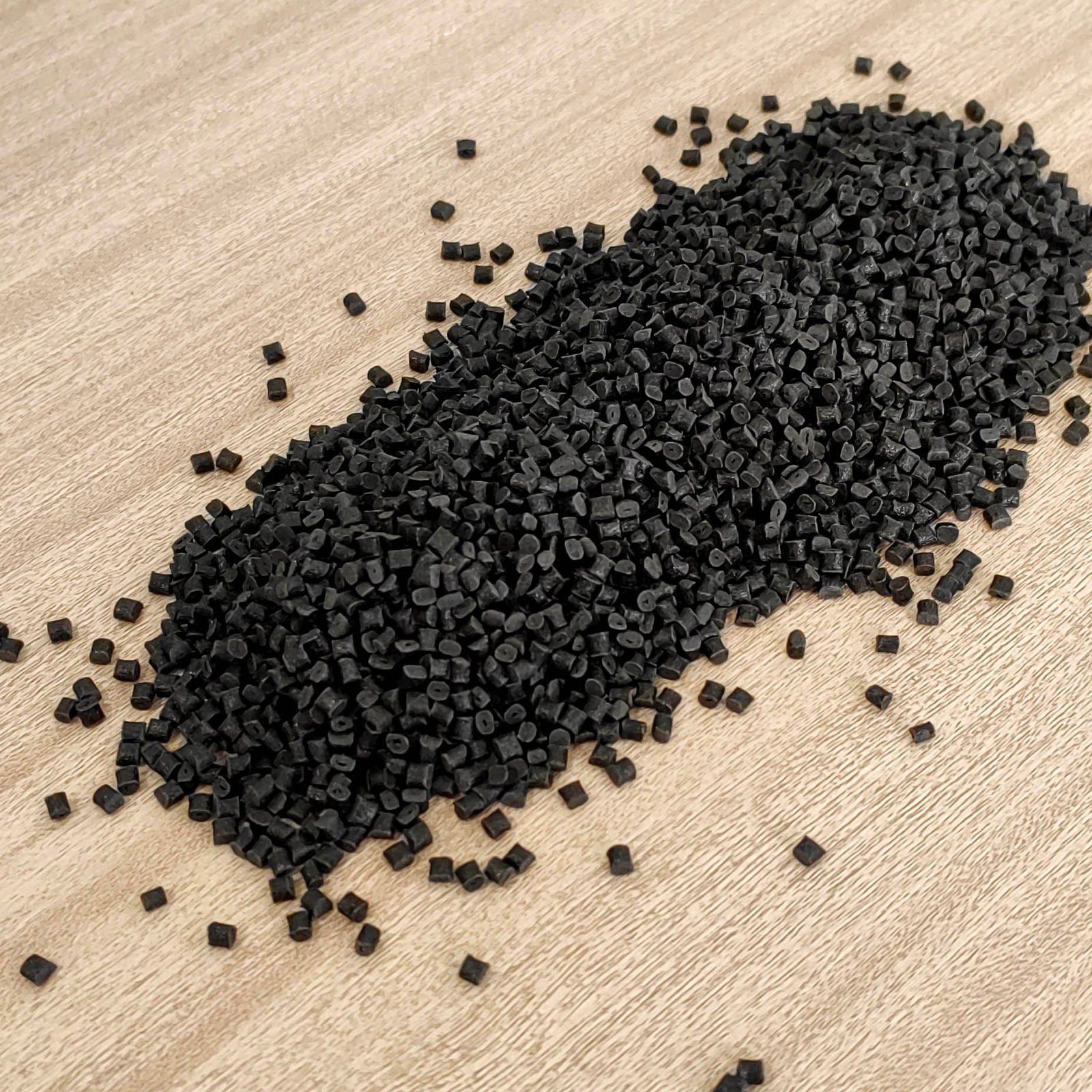PRODUCTS


Saudi Basic PBT 420 Features Applications and Data Sheet
Product Struction
Introduction to Saudi Basic PBT 420
In the field of electrical and precision engineering, the selection of materials is not only related to performance, but also to the success or failure of the product. Saudi Basic PBT 420, as a 30% glass fiber reinforced high heat-resistant grade PBT material, has been verified and applied by many global manufacturers, especially suitable for product development scenarios with high requirements for thermal stability, electrical safety and structural strength.

01 | Why choose PBT 420?
Structural stability and rigidity
PBT 420 is glass fibre reinforced to provide excellent flexural and tensile properties and is resistant to complex geometries and structural loads. Whether it's a small connector housing or a large electrical bracket, deformation is kept to a very low level.
Reliable partner in thermal environments
In the face of thermal stress environments such as high motor speed heat generation or light fixture heat dissipation aggregation, PBT 420 is able to operate stably at high temperatures with no change in dimensions and the same performance. Its thermal stability makes long-term use no longer a challenge.
Outstanding electrical insulation performance
For electronic components, insulation performance is critical. PBT 420 has extremely low dielectric loss and high dielectric strength, maintaining electrical reliability in a wide range of thicknesses and meeting many international insulation standards.
UL certification, confidence guarantee
PBT 420 has passed the strict UL safety certification, from the burning wire test to the long-term thermal aging performance. This not only enhances the market competitiveness of end products, but also provides strong support for global exports.
02 | Saudi Basic PBT 420 Application Case
Electric motor end cap (famous home appliance brand)
・Problem: Long-term high-speed operation leads to high-temperature deformation of the end cap part, and traditional PBT is too large due to thermal deformation, which leads to jamming and abrasion problems.
・Solution: PBT 420 maintains excellent dimensional stability and strength at high temperatures, ensuring that the end caps are tightly fitted and impact-resistant over the long term.
LED Spotlight Bracket (Lighting Manufacturer)
・Problem: LED heat source is concentrated, ordinary material bracket is easy to crack due to thermal stress, which affects the life of the whole lamp.
・Solution: After adopting PBT 420, the heat-resistant aging time was significantly improved without sacrificing structural strength, and the failure rate of the whole lamp dropped by more than 60%.
Small electrical connectors (automotive parts supplier)
・Problem: Insulation degradation at the connector due to long-term current-carrying heat, which in turn triggers the risk of electrical short-circuit.
・Solution: PBT 420's excellent electrical insulation and burning wire passability allows the connector to pass a number of IEC and UL certification tests at a thickness of 0.84mm.
03 | Saudi Basic PBT 420 Datasheet
| Mechanical behavior | Condition | Standard | Value | Unit | |||
| Elongation | Break 5mm/min | ASTM D638 | 3 | % | |||
| Flexural Strength | Break 1.3mm/min | ASTM D790 | 190 | MPa | |||
| Flexural Modulus | 1.3mm/min | ASTM D790 | 7580 | MPa | |||
| Izod Un-notch Impact | 23°C | ASTM D4812 | 81.73 | kJ/m² | |||
| Izod Notch Impact | 23°C | ASTM D256 | 8.67 | kJ/m² | |||
| Tensile Strength | Break 5mm/min | ASTM D638 | 119 | MPa | |||
| Thermal | Condition | Standard | Value | Unit | |||
| HDT | Unanealed 0.45MPa 6.4mm | ASTM D648 | 215 | °C | |||
| HDT | Unanealed 1.8MPa 6.4mm | ASTM D648 | 207 | °C | |||
| CLE | Flow -40.0~40°C | ASTM E831 | 2.52E-5 | cm/cm/°C | |||
| CLE | Flow 60~138°C | ASTM E831 | 2.52E-5 | cm/cm/°C | |||
| Physical property | Condition | Standard | Value | Unit | |||
| Water Absorption | 24hr | ASTM D570 | 0.06 | % | |||
| Shrinkage | Flow 1.50-3.20mm | INTERNAL METHOD | 0.3~0.5 | % | |||
| Shrinkage | Flow 3.20-4.60mm | INTERNAL METHOD | 0.5~0.8 | % | |||
| Shrinkage | xFlow 1.50-3.20mm | INTERNAL METHOD | 0.4~0.6 | % | |||
| Shrinkage | xFlow 3.20-4.60mm | INTERNAL METHOD | 0.6~0.9 | % | |||
| Specific Volume | ASTM D792 | 0.66 | cm³/g | ||||
| Density | ASTM D792 | 1.53 | g/cm³ | ||||
| Electrical properties | Condition | Standard | Value | Unit | |||
| Dielectric Constant | 1MHz | ASTM D150 | 3.7 | ||||
| Dielectric Constant | 100Hz | ASTM D150 | 3.8 | ||||
| Volume Resistivity | ASTM D257 | 3.2E+16 | Ω.cm | ||||
| Dielectric Strength | 1.6mm In Oil | ASTM D149 | 24 | KV/mm | |||
| Dielectric Strength | 3.2mm In Air | ASTM D149 | 18.7 | KV/mm | |||
| Dissipation Factor | 1MHz | ASTM D150 | 0.02 | ||||
| Dissipation Factor | 100Hz | ASTM D150 | 0.002 | ||||
| Hardness | Condition | Standard | Value | Unit | |||
| Rockwell Hardness | R(Scale) | ASTM D785 | 118 | ||||
| Flammability | Condition | Standard | Value | Unit | |||
| Limiting Oxygen Index | ASTM D2863 | 19 | % | ||||
| Flame Rating | 0.84mm | UL94 | HB | ||||
| Flame Rating | All Color 1.0mm | UL94 | HB | ||||
| Flame Rating | All Color 1.5mm | UL94 | HB | ||||
| Flame Rating | All Color 3.0mm | UL94 | HB | ||||
| Flame Rating | All Color 6.0mm | UL94 | HB | ||||
04 | How does PBT 420 address common customer pain points?
| Customer Challenges | How PBT 420 Addresses Them |
|---|---|
| Significant warping or dimensional drift at high temperatures | High heat deflection temperature and low shrinkage ensure excellent dimensional stability and structural integrity. |
| Insufficient strength, prone to cracking during assembly | Reinforced with 30% glass fiber, offering high rigidity and enhanced impact and flexural strength. |
| Electrical performance not meeting safety standards | Combines high dielectric strength, low dissipation factor, and UL certifications to meet stringent electrical insulation and safety requirements. |
| Cost pressure in production | Compared to PA66, PBT offers shorter molding cycles, lower moisture absorption, and more stable processing, reducing total manufacturing costs. |
| Stringent export compliance requirements | Fully UL-certified and compliant with North American and EU regulatory standards, ensuring smoother market access. |
05 | Performance Upgrade: Compared to Conventional PBT Grades
| Performance Category | Conventional PBT | SABIC PBT 420 |
|---|---|---|
| Heat Deflection Temperature (HDT) | 160–180°C | Up to 207–215°C |
| Stiffness & Strength | Moderate | High rigidity, flexural modulus >7500 MPa |
| Dimensional Stability | Prone to shrinkage and warping | Low shrinkage rate, precise dimensions |
| Flame Retardancy | Typically HB or V2 | Certified HB, GWIT 750–825°C |
| Molding Efficiency | Standard | Excellent flowability, ideal for high-volume injection molding |
06 | Who needs PBT 420 the most?
Electrical connector manufacturers: long-term heat resistance, electrical stability, high assembly accuracy
Small motor and transmission companies: high temperature and high load environment, the material must be ‘resistant’ to long time operation
Home appliance shells and structural components companies: valued resistance to deformation, strength and surface quality of both
LED lighting industry designers: Materials should not only support the structure, but also not due to heat and aging cracks
07 | Conclusion: Choosing the right material is the starting point for manufacturing competitiveness
Saudi Basic PBT 420 is more than just a plastic, it is a highly stable and predictable engineering solution. It helps manufacturers strike the ideal balance between structural design, electrical safety, productivity and global compliance.
Contact us today for samples and datasheet support, and let PBT 420 add value to your products!
【Related Recommendations】
Celanese PBT 3316: Next-Generation PBT for High-Reliability Electronic Components Learn more>
Toray PBT 1184G-A15: Reinforced Flame-Retardant PBT for Electronic Components Learn more>
DuPont SK645FR NC010: High-Rigidity PBT for Demanding Electrical Applications Learn more>






